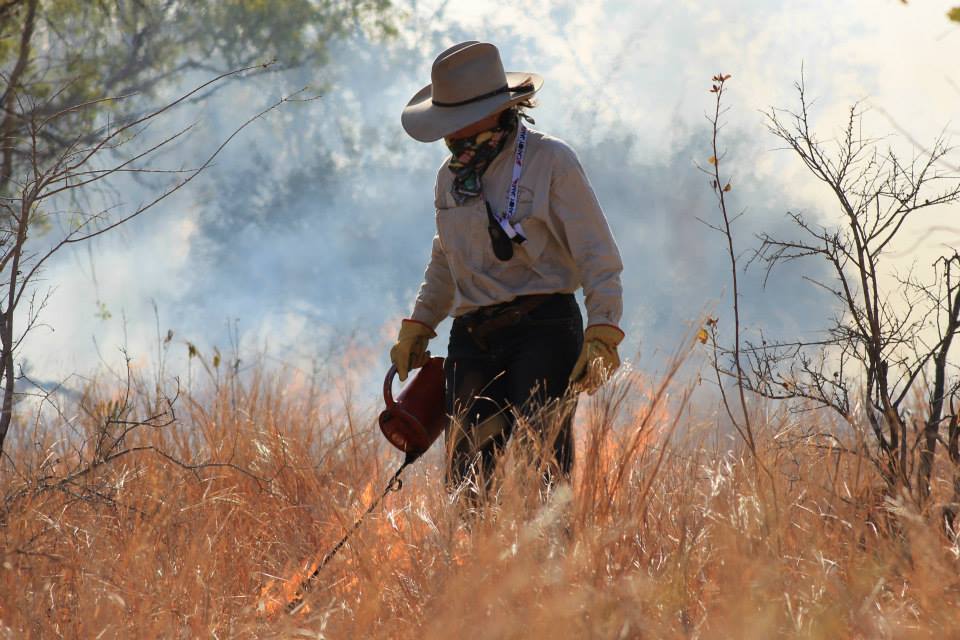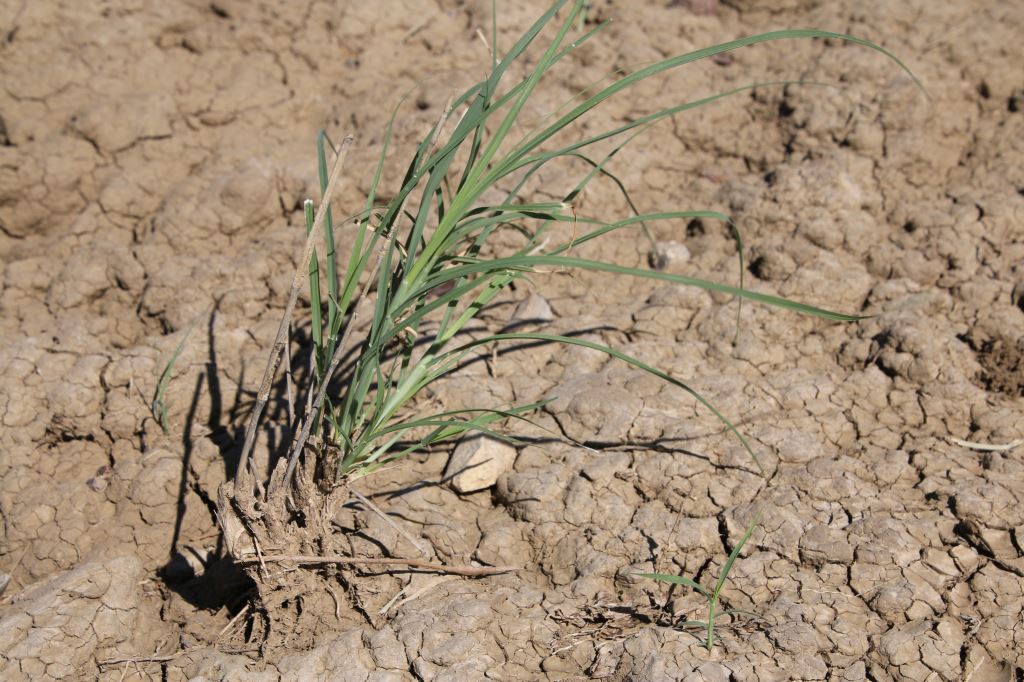Plan for and recover from disasters
Natural disasters and hazards come in many forms, from weather extremes, to bushfires, to biosecurity alerts. Some (such as earthquakes or tornadoes) are relatively uncommon in Australia. It is recommended you investigate the likelihood of various adverse natural disasters occurring in your area, and develop an overall risk management plan for your property.
On this page:
- Disasters
- Assistance
-
- Australian government
- State government
- Local
- Counselling services
-
Fire
 Bushfires can develop from a range of sources, including planned controlled burning that escapes the original burn zone, embers from a cigarette or unattended campfire, lightning strikes, or deliberate arson. Fires are usually quick to establish, spread rapidly, and their path can be difficult to predict. Losses to stock, pasture, and infrastructure can be devastating. Even if stock are not directly affected, the loss of pasture often has longer-term implications for supplementary feeding and stocking rates.
Bushfires can develop from a range of sources, including planned controlled burning that escapes the original burn zone, embers from a cigarette or unattended campfire, lightning strikes, or deliberate arson. Fires are usually quick to establish, spread rapidly, and their path can be difficult to predict. Losses to stock, pasture, and infrastructure can be devastating. Even if stock are not directly affected, the loss of pasture often has longer-term implications for supplementary feeding and stocking rates.
Sources of information on bushfires:
 Storms and floods
Storms and floods
Storms are a regular occurrence in Australia and range in intensity from minor thunderstorms to category 5 cyclones. Lightning can ignite bushfires, torrential downpours can initiate flash flooding, and high winds and hail can cause damage to crops, trees, stock, and infrastructure. Stock losses may occur during the storm (e.g. flying debris), or later from disease, starvation, or movement though damaged fences.
Flash flooding is often caused by local storms, and involves a quick rise and fall in water levels (usually within an existing watercourse). Riverine or floodplain flooding usually involves extended or heavy rainfall over a wide area of catchment, and may take hours, days or even weeks to reach your area. Floods can cause substantial damage to infrastructure, stock losses, and substantial soil erosion.
Sources of information on severe storms, floods and cyclones:
Drought
 While drought is not as much of an immediate natural disaster threat as much as an approaching bushfire or storm, the effects can be just as devastating. Drought not only impacts on current stock condition and reduces income from lower stocking rates, but prolonged drought affects overall land condition, from which it can be difficult to recover.
While drought is not as much of an immediate natural disaster threat as much as an approaching bushfire or storm, the effects can be just as devastating. Drought not only impacts on current stock condition and reduces income from lower stocking rates, but prolonged drought affects overall land condition, from which it can be difficult to recover.
Sources of information on drought:
- Queensland drought situation reports (LongPaddock)
- Drought support (Queensland Rural Industry and Development Authority)
- Farm Business Planning North Queensland
- Drought, FutureBeef
- Federal drought programs and rural assistance (Department of Agriculture)
- Managing drought (New South Wales Department of Primary Industries)
- Bureau of Meteorology rainfall deficiency
- ABC media reports
Biosecurity incursions
The risk of an exotic pest or disease entering Australia is always present. Potential repercussions of an outbreak include transport restrictions, costs of animal treatment or culling, and potential loss of international or domestic markets. Some pests and diseases may also impact on human health.
Sources of information on biosecurity:
- National pest and disease outbreaks
- Federal Government Biosecurity
- Emergency animal disease watch hotline: 1800 675 888
- Exotic plant pest hotline: 1800 084 881
- Animal biosecurity fees and contacts, Northern Territory
- Biosecurity Queensland
- Biosecurity Western Australia
Assistance for recovery from natural disasters
Help after natural disasters is usually divided into two types:
- Immediate relief (first response), such as search and rescue, shelter, food rations etc.
- Recovery assistance, which may be individual or community-based.
Types of recovery assistance that may be available to you after a disaster include grants, low interest loans, food or fodder drops, tax breaks or concessions, or other physical, financial, or mental support services.
Australian Government assistance
- Drought programs and rural assistance (Department of Agriculture)
- Help in an emergency (Australian Government)
- Rural Financial Counselling Service | 1800 686 175
State Government assistance
- Northern Territory drought assistance
- Natural disaster information, Queensland Department of Primary Industries
- Queensland Rural and Industry Development Authority, Queensland
- Customer Call Centre (Department of Primary Industries) 13 25 23 (cost of a local call within Queensland) or 07 3404 6999 8am to 5pm Monday, Tuesday, Wednesday and Friday, and 9am to 5pm Thursday.
Local assistance
Local councils, organisations or clubs may also be able to provide information and/or support.
Counselling services
If you are suffering hardship or stress, even if you don’t require financial assistance, there are a variety of counselling services that can offer suggestions based on your circumstances.
- Beyond Blue | 1300 224 636
- RUOK? | 1800 RUOKDAY (7865329)
- Lifeline | 13 11 14
- Rural Financial Counselling Service | 1800 686 175
Local community groups may also be able to offer support.
Multimedia — Natural disasters
Climate outlooks – month and seasonal
The Bureau of Meteorology produces quarterly climate and water outlook videos – visit their Climate outlooks – monthly and seasonal web page for the latest climate outlook overview.
Protecting your most important asset – You!
‘Protecting your greatest asset – YOU’ is a short talk designed to assist people affected by drought, although it is applicable to anyone who is ‘doing it tough’. The talk offers some self-help strategies to take care of yourself and others. It also gives some guidelines on when to seek additional help, and where to go for that help. 20:03 minutes published 29 July 2014 by FutureBeefAu
Decisions for drought affected producers
Two-thirds of Queensland is drought declared and we are potentially facing a second failed wet season. The few patchy rainfall events have brought limited relief to areas desperately needing it. Even if it rains in the next few weeks, it may be too late for useful pasture growth, so it’s timely to review and critically reflect on drought action plans and develop a way forward. In this webinar recording, FutureBeef senior extension officer Roger Sneath discusses:
- the current situation and the year ahead: developing forage budgets, adjusting cattle numbers and long term planning
- options and tools: sell, agist, feedlot, production or survival feeding, and spreadsheets available to help decide the best one for your situation
- feed supplies: availability, cost and how to cost nutrients
- producers’ reflections on drought.
For your convenience, here are the presentation slides (PDF, 2.19MB) and a list of useful links (PDF, 215KB).
50:55 minutes published 28 February 2014 by FutureBeefAu
Drought and the breeder
In this presentation Dr Geoffry Fordyce (Queensland Alliance for Agriculture and Food Innovation) discusses the new concepts for measuring breeder productivity, with insights from the recent Cash Cow project and their application to seasonal breeder management.
28:28 minutes published 18 March 2014 by FutureBeefAu
Pasture flood recovery
In this presentation, Stuart Buck (Senior Pasture Agronomist, Department of Agriculture and Fisheries), explains the key points in pasture recovery from a flood event. Stuart covers the tolerances of grasses, various management options including pasture spelling, controlling weeds, re-seeding pasture and forage crop options and concludes with his key ‘take home’ messages.
16:16 minutes published 3 March 2013 by FutureBeefAu